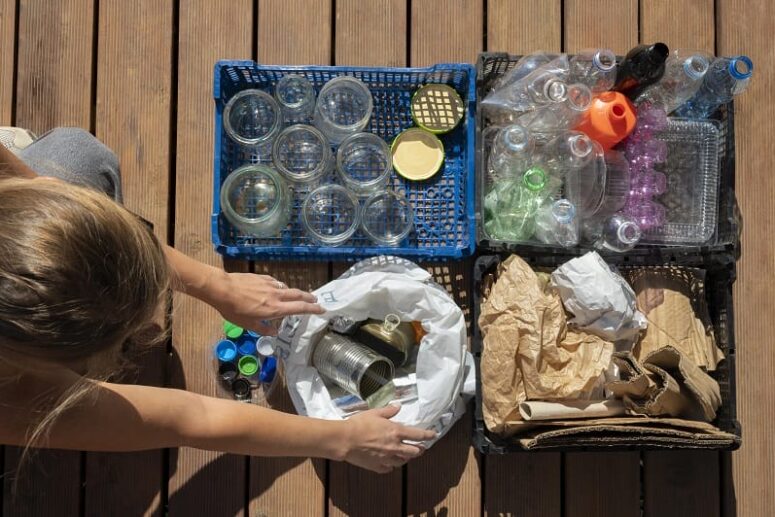
Recycling vs Reusing – Aren’t They the Same Thing?
In an age of environmental awareness, the concepts of recycling and reusing have come to mean similar yet crucially different things. Both are important to the successful pursuit of sustainable living. This article unravels the two terms, recycling and reusing, and offers light on their respective impacts on the environment.
What is Recycling?
You may think of it as the process of separating your disposables into multiple designated household bins. However, recycling is the next step in the process. It involves processing those old, discarded items to create new products. Though widely adopted, it is not without its challenges. Even some items that would seem easily recyclable, like cups and boxes, can be made out of complex materials that are difficult to melt or mash down to create something new.
When is it hard to do?
Many materials face obstacles in the recycling process due to a lack of waste management services. While everyone knows recycling is important, it is still often easier to throw materials away and buy new rather than try to recycle. Here are four examples that illustrate the nuances of recycling:
Pizza Boxes – Contamination with grease from your favorite cheesy wheel makes recycling the cardboard difficult.
Tip: To recycle, you need to remove any leftover food and tear off the uncontaminated parts.
Plastic Bags – The thin yet sturdy plastic used to carry groceries or even other recycling is almost too good at what it does. The sturdy plastic clogs recycling machinery, meaning that it needs a special facility to recycle and adding to hard plastics can even slow down the recycling process for all recyclables.
Tip: Utilize designated drop-off locations at grocery stores for plastic bag recycling.
Disposable Coffee Cups – The difficulty with these is in separating plastic lining from paper. The plastic lining isn’t there for no reason; without it, your cup would go floppy, become too hot to handle, and you would likely end up scalding yourself.
Tip: Opt for reusable cups or use a travel mug for your daily coffee fix.
Broken Glass – Different colors of glass may require separate recycling streams. In some countries, they require you to separate glass by color. In most of the USA, the recycling process does this for you, but still, it costs money and time to get it right.
Tip: Repurpose broken glass creatively or use it in DIY projects.
In all of the above examples, perhaps the best choice you can make is to avoid dealing with these difficult pieces of nonrecyclable packaging. Of course, you can still drink coffee or conveniently load your groceries. The key is recycling’s better half, reusing.
What is Reusing?
Reusing takes a different approach, focusing on extending the lifespan of products rather than breaking them down for recycling. This practice promotes creativity and resourcefulness, encouraging individuals to find innovative ways to give items a second life. Here are four examples that highlight the potential of reusing:
- Glass Jars – Store dry goods, create a DIY terrarium, or use one as a candle holder. Just remember to remove labels and clean thoroughly before reusing.
- Old T-Shirts – Transform them into cleaning rags, make a quilt, or fashion a reusable grocery bag. Otherwise, cut shirts into strips for a versatile and eco-friendly cleaning solution.
- Wine Corks – Craft a bulletin board, create a trivet, or use it as a gardening marker. Since they’re rarely useful on their own, save corks in a designated container until you have enough for a project.
- Furniture Makeovers – Revamp old furniture with a fresh coat of paint or new upholstery. YouTube has a never-ending playlist of tutorials.
Striking a Balance
Achieving a sustainable lifestyle involves a delicate balance between recycling and reusing. While recycling addresses the end-of-life stage of products, reusing focuses on continual use and repurposing. Here are two examples that exemplify the complementary nature of these practices:
Old Clothing:
- Recycling: Donate or recycle beyond repair.
- Reusing: Upcycle into new clothing items or repurpose as household textiles.
Electronic Devices:
- Recycling: Properly dispose of old devices to recover valuable materials.
- Reusing: Extend the lifespan by donating to a friend, upgrading components, or selling on Marketplace.
A Natural Metaphor
Since recycling and reusing are such environmentally important concepts, it’s not a surprise that nature uses both of these concepts frequently as well. For example, a bird gathering twigs and leaves to build a nest is a great example of reusing something after its original use for the tree has been expended.
On the other hand, fungi and other natural processes can take the same input and decompose the leaves and twigs into new soil for the next generation of trees. This would be a perfect example of recycling in action.
In many ways, natural processes that reuse and recycle are the least wasteful options we have, which is why it’s good to consider buying materials and equipment that can biodegrade.
The Final Word
In our collective journey towards a greener future, understanding the distinctions between recycling and reusing might seem like splitting hairs, but in fact, they are quite different and both crucial. Integrating these approaches can help Salt Lake City waste disposal companies curb the ever-increasing amount of garbage heading to landfills. By adopting mindful habits and incorporating creative solutions into our daily lives, we can contribute to a more sustainable and environmentally conscious world.
